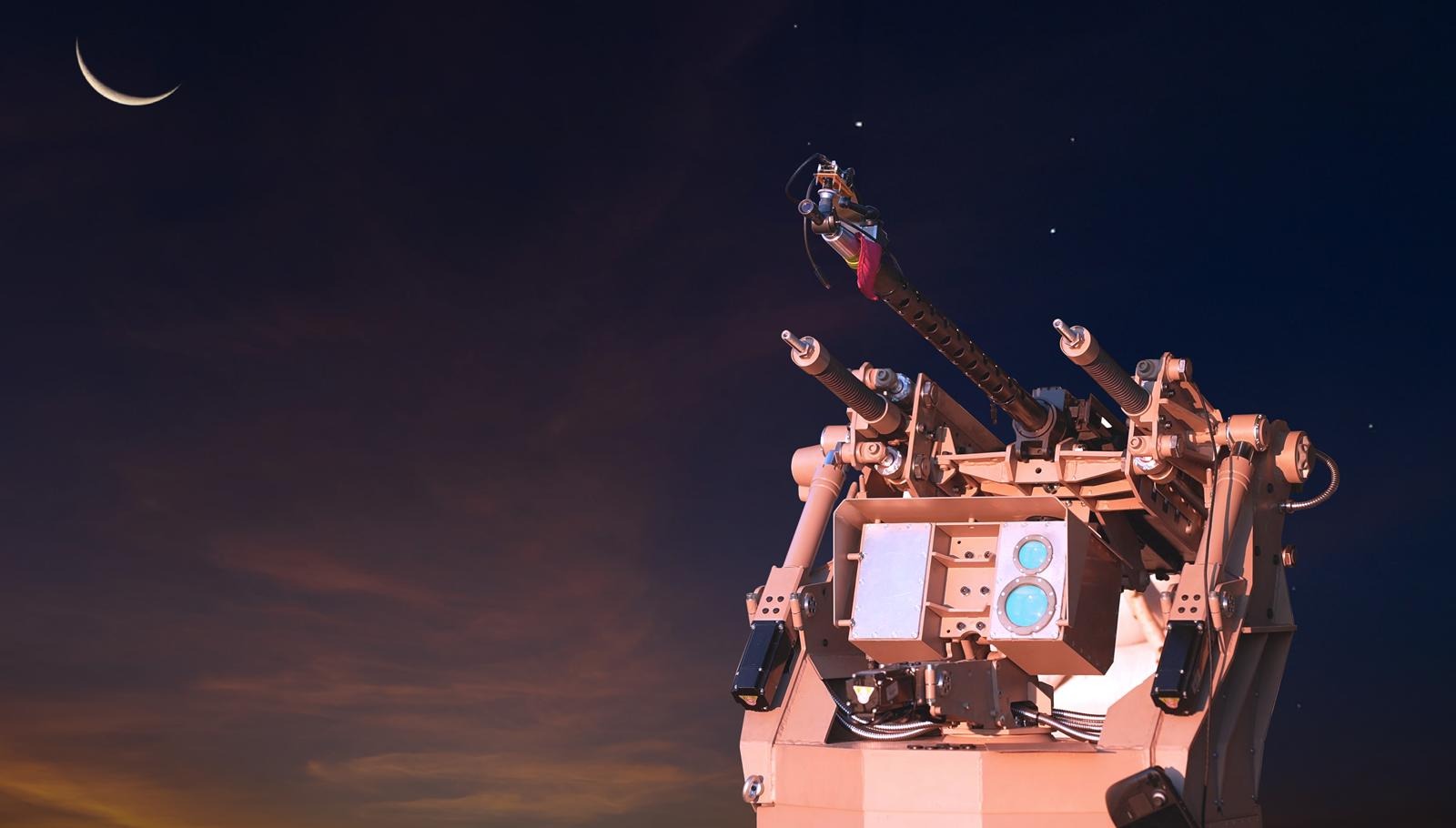Un equipo de ingenieros ucranianos ha desarrollado una torreta de armas autónoma (RWS – Remote Weapon Station) para Def Ae cercana, controlada por inteligencia artificial (AI) y que dispone de la capacidad de derribar los impredecibles drones de ataque ( UCAS – LM) así como pequeños misiles de crucero de vuelo a baja altura. Denominado Sky Sentinel, este importante desarrollo local, cuyo prototipo ya está siendo probado en combate y puede ser fabricado a bajo costo en cantidades suficientes, complementará la infraestructura de Def Ae de Ucrania, integrada por los sofisticados pero escasos sistemas de Def Ae como el Patriot y otros provistos por países aliados.
A team of Ukrainian engineers has developed an AI-controlled air defense turret to down unpredictable attack drones and low-flying cruise missiles.
Russia has fired an estimated 100 low-cost drones into Ukrainian skies each day, causing serious destruction and loss of life.
To counter the threat, a panoply of systems have been arranged and deployed by Ukraine ranging from expensive Western platforms such the Patriot to traditional anti-aircraft guns, interceptor drones, and electronic warfare techniques.
Perhaps for the first time, an AI-controlled hard-kill air defense solution has been developed and deployed by Ukraine that comes at a fraction of the cost of Western air defense missiles.
The Sky Sentinel
The Sky Sentinel resembles any other manned turret, equipped with a heavy machine gun that can rotate 360 degrees.
What distinguishes it from the others is the AI-based brain that controls it.
Once deployed, the system “detects, locks on, tracks the flight paths, calculates the shot, and fires. All on its own,” Ukrainian government-run UNITED24 Media explained, citing the developers.
Engineering Feat
Made up of several intricately linked moving parts, the system’s development required avoiding a common engineering challenge that plagues many such systems called the “play,” or a minuscule mechanical slack that prevents pinpoint accuracy.
Not only did the team have to eliminate the “play,” is also had to take care of the turret’s external movements such as rotation, raising and lowering, recoil, and riding on a trailer.
“We had to build a system that moves a lot with zero mechanical play,” UNITED24 Media quoted one of the team’s engineers as explaining.
The team’s lead engineer further explained: ”We’re solving dozens of micro-challenges so that everything works as a single seamless system.”
“No mechanical slack, no software delays, flawless optics, and precision firing. It all has to work in perfect sync.”
Features
The domestically designed and developed system consists of foreign components for targeting and rangefinding, as there is no Ukrainian substitute.
It requires constant visual lock on its target to ensure a precise hit at the right moment.
Real-time calculations mean the system doesn’t require guided munitions, which helps keep its cost low.
During field trials, the system has proven its worth against drones five times smaller than Shaheds, UNITED24 Media reported.
It can take down aerial objects flying at a rate of up to 800 kilometers (497 miles) per hour, including cruise missiles, loitering munitions, and other types of drones.
According to the developers, the system can defend both sprawling urban centers and frontlines.
A Sky Sentinel prototype has already downed four Shahed drones on the battlefield. Further details have not been disclosed due to security concerns.
The system’s effective range has also been withheld, but future variants are being designed for a wider mission profile.
Cost-Effective Solution
At $150,000, it costs a fraction of Western air defense munitions such as the $4 million Patriot Advanced Capability-Three Missile Segment Enhancement.
According to the developers, 10 to 30 systems are required to protect a city.
The system’s production is being scaled up to deliver dozens of units per month, according to UNITED24 Media.
However, mass production enhances the challenge of keeping the system flawless, particularly the mechanical “play.”
“But it’s absolutely doable,” the lead developer said.
Fuente: https://thedefensepost.com


